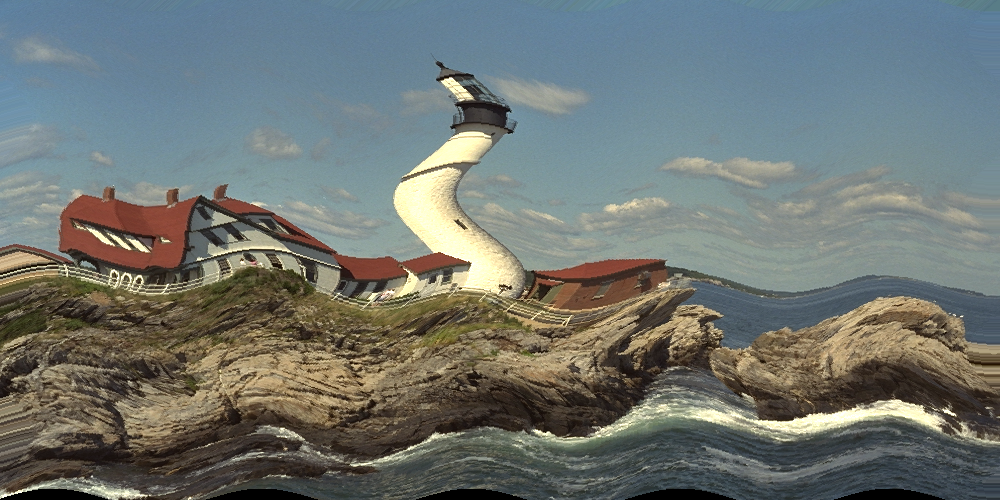CUDA.jl 1.1
Tim Besard
CUDA.jl 1.1 marks the first feature release after merging several CUDA packages into one. It raises the minimal Julia version to 1.4, and comes with support for the impending 1.5 release.
CUDA.jl replacing CuArrays/CUDAnative.jl
As announced a while back, CUDA.jl is now the new package for programming CUDA GPUs in Julia, replacing CuArrays.jl, CUDAnative.jl, CUDAdrv.jl and CUDAapi.jl. The merged package should be a drop-in replacement: All existing functionality has been ported, and almost all exported functions are still there. Applications like Flux.jl or the DiffEq.jl stack are being updated to support this change.
CUDA 11 support
With CUDA.jl 1.1, we support the upcoming release of the CUDA toolkit. This only applies to locally-installed versions of the toolkit, i.e., you need to specify JULIA_CUDA_USE_BINARYBUILDER=false in your environment to pick up the locally-installed release candidate of the CUDA toolkit. New features, like the third-generation tensor cores and its extended type support, or any new APIs, are not yet natively supported by Julia code.
NVIDIA Management Library (NVML)
CUDA.jl now integrates with the NVIDIA Management Library, or NVML. With this library, it's possible to query information about the system, any GPU devices, their topology, etc.:
julia> using CUDA
julia> dev = first(NVML.devices())
CUDA.NVML.Device(Ptr{Nothing} @0x00007f987c7c6e38)
julia> NVML.uuid(dev)
UUID("b8d5e790-ea4d-f962-e0c3-0448f69f2e23")
julia> NVML.name(dev)
"Quadro RTX 5000"
julia> NVML.power_usage(dev)
37.863
julia> NVML.energy_consumption(dev)
65330.292Experimental: Texture support
It is now also possible to use the GPU's hardware texture support from Julia, albeit using a fairly low-level and still experimental API (many thanks to @cdsousa for the initial development). As a demo, let's start with loading a sample image:
julia> using Images, TestImages, ColorTypes, FixedPointNumbers
julia> img = RGBA{N0f8}.(testimage("lighthouse"))We use RGBA since CUDA's texture hardware only supports 1, 2 or 4 channels. This support is also currently limited to "plain" types, so let's reinterpret the image:
julia> img′ = reinterpret(NTuple{4,UInt8}, img)Now we can upload this image to the array, using the CuTextureArray type for optimized storage (normal CuArrays are supported too), and bind it to a CuTexture object that we can pass to a kernel:
julia> texturearray = CuTextureArray(img′)
julia> texture = CuTexture(texturearray; normalized_coordinates=true)
512×768 4-channel CuTexture(::CuTextureArray) with eltype NTuple{4,UInt8}Let's write and a kernel that warps this image. Since we specified normalized_coordinates=true, we index the texture using values in [0,1]:
function warp(dst, texture)
tid = threadIdx().x + (blockIdx().x - 1) * blockDim().x
I = CartesianIndices(dst)
@inbounds if tid <= length(I)
i,j = Tuple(I[tid])
u = Float32(i-1) / Float32(size(dst, 1)-1)
v = Float32(j-1) / Float32(size(dst, 2)-1)
x = u + 0.02f0 * CUDA.sin(30v)
y = v + 0.03f0 * CUDA.sin(20u)
dst[i,j] = texture[x,y]
end
return
endThe size of the output image determines how many elements we need to process. This needs to be translated to a number of threads and blocks, keeping in mind device and kernel characteristics. We automate this using the occupancy API:
julia> outimg_d = CuArray{eltype(img′)}(undef, 500, 1000);
julia> function configurator(kernel)
config = launch_configuration(kernel.fun)
threads = Base.min(length(outimg_d), config.threads)
blocks = cld(length(outimg_d), threads)
return (threads=threads, blocks=blocks)
end
julia> @cuda config=configurator warp(outimg_d, texture)Finally, we fetch and visualize the output:
julia> outimg = Array(outimg_d)
julia> save("imgwarp.png", reinterpret(eltype(img), outimg))
Minor features
The test-suite is now parallelized, using up-to JULIA_NUM_THREADS processes:
$ JULIA_NUM_THREADS=4 julia -e 'using Pkg; Pkg.test("CUDA");'
| | ---------------- GPU ---------------- | ---------------- CPU ---------------- |
Test (Worker) | Time (s) | GC (s) | GC % | Alloc (MB) | RSS (MB) | GC (s) | GC % | Alloc (MB) | RSS (MB) |
initialization (2) | 2.52 | 0.00 | 0.0 | 0.00 | 115.00 | 0.05 | 1.8 | 153.13 | 546.27 |
apiutils (4) | 0.55 | 0.00 | 0.0 | 0.00 | 115.00 | 0.02 | 4.0 | 75.86 | 522.36 |
codegen (4) | 14.81 | 0.36 | 2.5 | 0.00 | 157.00 | 0.62 | 4.2 | 1592.28 | 675.15 |
...
gpuarrays/mapreduce essentials (2) | 113.52 | 0.01 | 0.0 | 3.19 | 641.00 | 2.61 | 2.3 | 8232.84 | 2449.35 |
gpuarrays/mapreduce (old tests) (5) | 138.35 | 0.01 | 0.0 | 130.20 | 507.00 | 2.94 | 2.1 | 8615.15 | 2353.62 |
gpuarrays/mapreduce derivatives (3) | 180.52 | 0.01 | 0.0 | 3.06 | 229.00 | 3.44 | 1.9 | 12262.67 | 1403.39 |
Test Summary: | Pass Broken Total
Overall | 11213 3 11216
SUCCESS
Testing CUDA tests passedA copy of Base.versioninfo() is available to report on the CUDA toolchain and any devices:
julia> CUDA.versioninfo()
CUDA toolkit 10.2.89, artifact installation
CUDA driver 11.0.0
NVIDIA driver 450.36.6
Libraries:
- CUBLAS: 10.2.2
- CURAND: 10.1.2
- CUFFT: 10.1.2
- CUSOLVER: 10.3.0
- CUSPARSE: 10.3.1
- CUPTI: 12.0.0
- NVML: 11.0.0+450.36.6
- CUDNN: 7.6.5 (for CUDA 10.2.0)
- CUTENSOR: 1.1.0 (for CUDA 10.2.0)
Toolchain:
- Julia: 1.5.0-rc1.0
- LLVM: 9.0.1
- PTX ISA support: 3.2, 4.0, 4.1, 4.2, 4.3, 5.0, 6.0, 6.1, 6.3, 6.4
- Device support: sm_35, sm_37, sm_50, sm_52, sm_53, sm_60, sm_61, sm_62, sm_70, sm_72, sm_75
1 device(s):
- Quadro RTX 5000 (sm_75, 14.479 GiB / 15.744 GiB available)CUTENSOR artifacts have been upgraded to version 1.1.0.
Benchmarking infrastructure based on the Codespeed project has been set-up at speed.juliagpu.org to keep track of the performance of various operations.